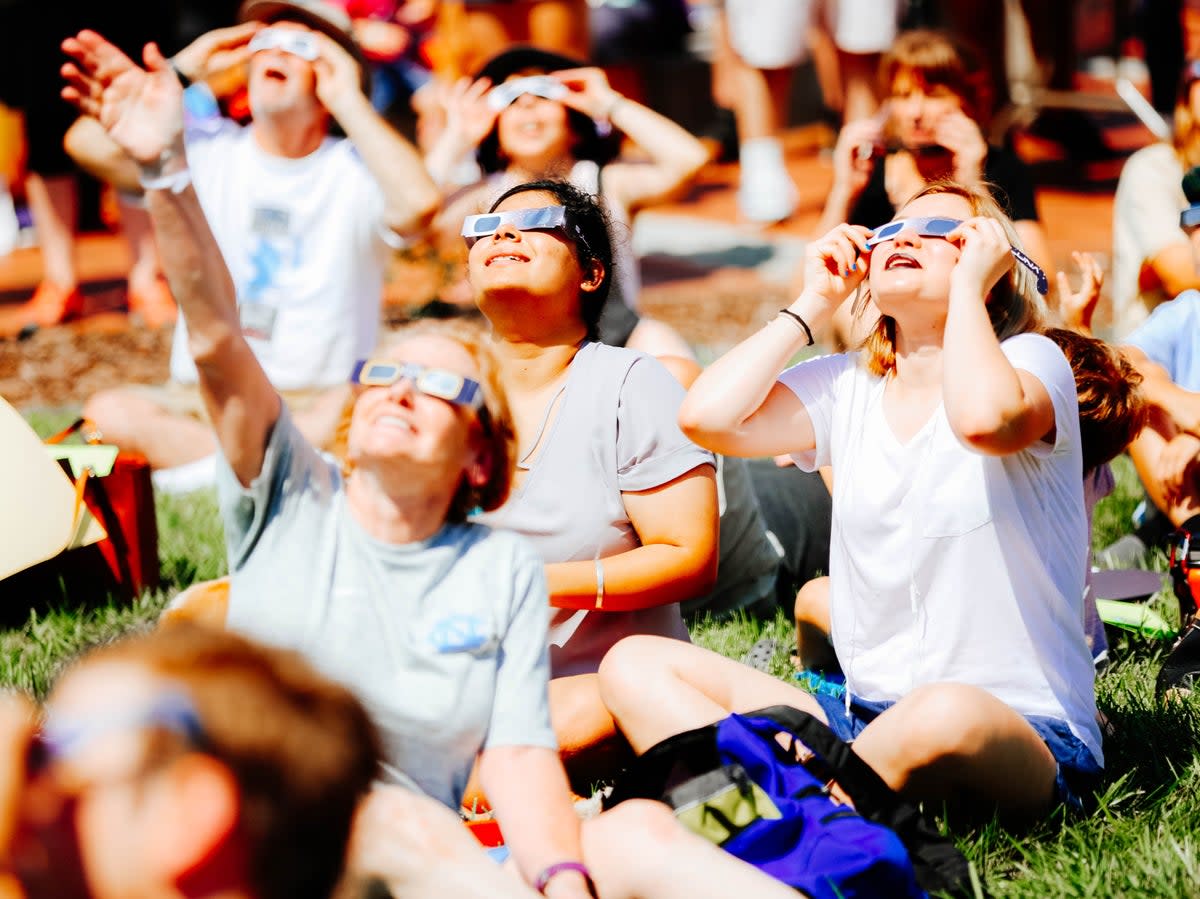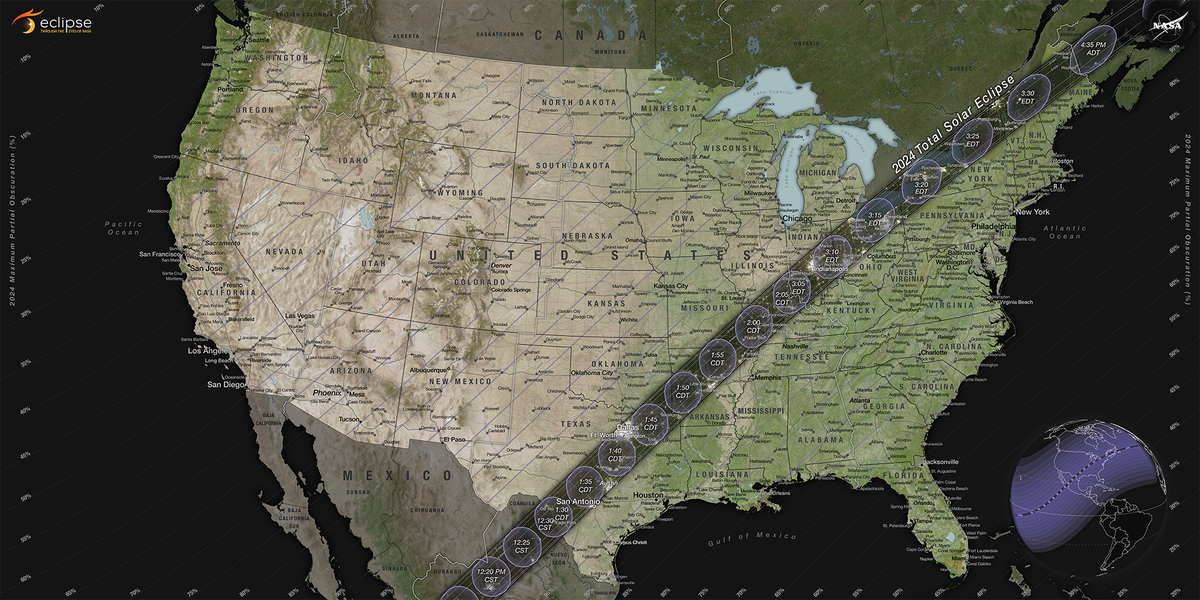Solar eclipse 2024: Clouds could block view in every metro area, forecasters warn
Clouds could block views of the solar eclipse on 8 April in all metro areas across the United States, forecasters have warned.
The severe weather advisory could impact the “opportunity to witness the total solar eclipse in almost every metro area along the path of totality,” meteorologists at AccuWeather Global Weather Center said.
The path of totality is the area where the moon will fully block out the sun for approximately five minutes.
The risk of clouds is because of a severe thunderstorm set to roll across the western Plains to the Midwest from Monday morning.
Paul Pastelok, a long-range forecaster with the center, explained that because the clouds will be both high and low in the atmosphere, some metro areas will be worse affected than others.
Large hail and strong, damaging wind gusts will be the biggest threats from the thunderstorm.
“An isolated tornado cannot be ruled out,” Pastelok said. “Large hail can damage vehicles, bring down tents, and cause injuries. These storms could impact areas around Kansas City and Omaha.
He added that “clouds can break for some sunshine, just in time for the afternoon viewing from Chicago to Cleveland” on Monday.
Kansas City, St. Louis, and Indianapolis are predicted to have a good views of the solar eclipse.
The clearest skies will be across the southwest. Parts of the mid-Atlantic and Southeast are predicted to be ideal viewing spots too, according to the report.
“Los Angeles, El Paso, New York City, Boston, and Raleigh should all have nice views of the partial eclipse from start to finish,” Pastelok said.
However, travel may be impacted due to strong cross winds along the major highways, specifically Interstate 80 and Interstate 40.

“Make sure any loose material, including tents and items on top of cars and campers are securely fastened. Snow can fall heavy at times with blizzard conditions in the central and eastern mountains of Wyoming and Montana this weekend. Travel over this section will be dangerous due to snow and low visibility,” the forecaster said.
In addition to the clouds, east Texas and lower Mississippi valley should watch out for drenching thunderstorms and showers. These conditions could move up to southern Oklahoma through Monday night. West-central Texas could also experience an aftermath of “flash flooding, hail, and brief, yet strong wind gusts” from the storms.

After the eclipse, Pastelok said there is a tornado risk in parts of Oklahoma, Texas, and Arkansas. Pastelok.
This year the eclipse will last for four minutes and 28 seconds, twice as long as the solar eclipse in 2017. In that time, the moon will line up perfectly between the Earth and the sun, darkening the sky.
The eclipse is passing over a more populated area than it did seven years ago. It will start on the Pacific coast of Mexico, travel up and east to Texas and Oklahoma, and then north to New England before it disappears in Canada.
Some 44 million people are estimated to be on the 115-mile-wide path of totality from Mexico to Canada, approximately 32 million in the US.
Here’s everything you need to know about this year’s eclipse and how to safely watch it.
